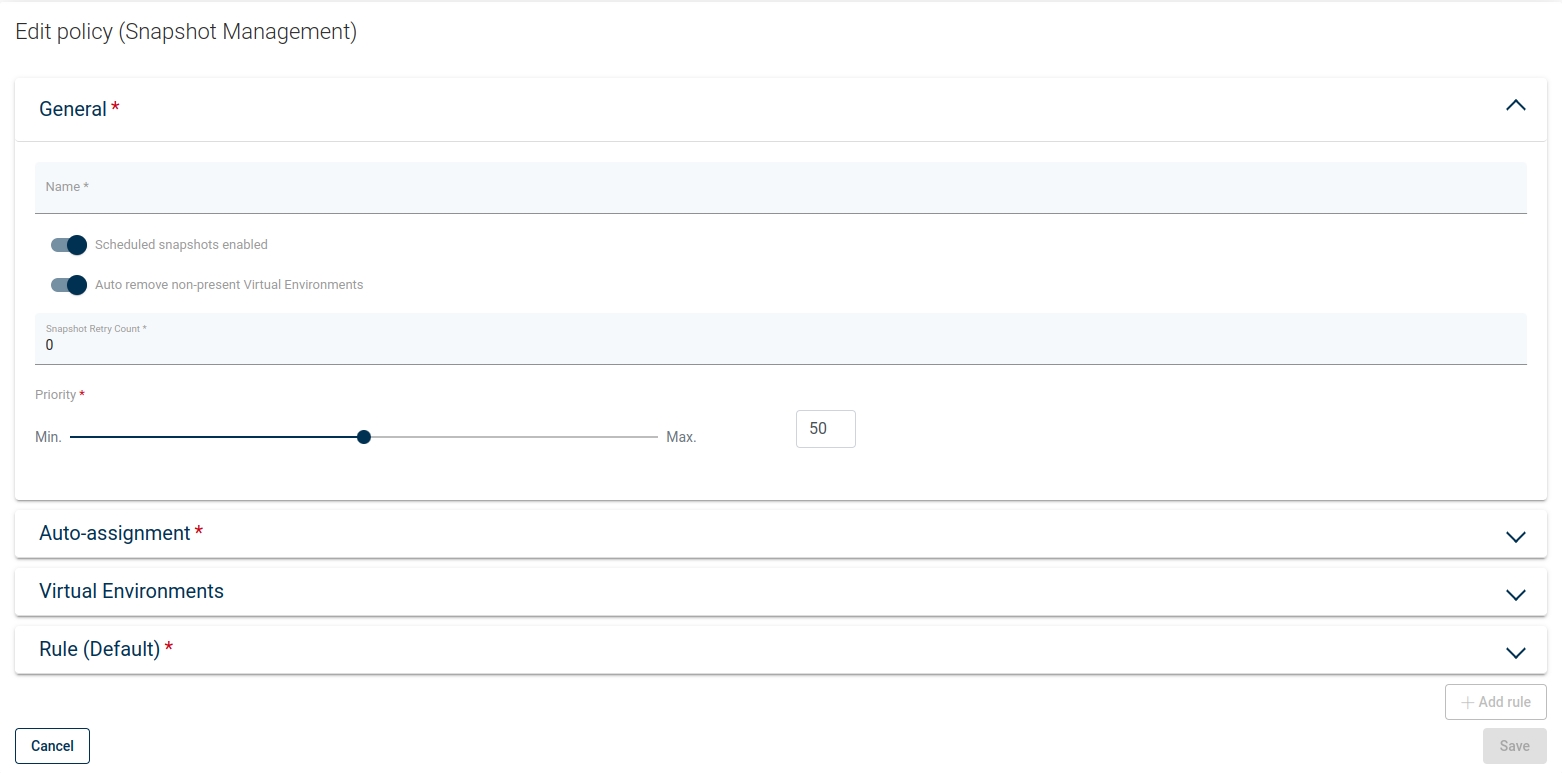Policies
In order to enable snapshot management for VM, you need to do the following steps:
Go to Snapshot SLAs under the Virtual Environment section and create a new Snapshot Management policy ![]()

As well as other types of Policies, you'll also find 4 main sections here.

General
Under this section, you can set up:
Name of policy
Switch on/off for auto remove non-present virtual environments
Set priority for tasks
Auto-assignment
In this section, you can set up:
Mode
Disabled
Assign only
Assign and remove
Include or exclude rules based on hypervisor tag's or regular expression matching VM name:
regular expression examples:
.*match any character any number of timesvm-[0-9][0-9][0-9]- match the name that starts withvm-and 3 digits(prod|uat|dev)-[0-9][0-9][0-9][a-z]?- match the name that starts withprodoruatordevprefix, then-, then 3 digits and optional lower-case letter (matching is case-sensitive)
exclude rules always take precedence over include rules
VMs may not be reassigned to the different policies if they already have a matching policy assigned
VMs may be reassigned to the different policy only if the mode is
Assign and remove, current policy assignment rules don't match, and other's policy rules matchrules are joined with OR operator, so
if any rule (tag or matched regular expression) excludes VM - it will be excluded
if no rule (tag or matched regular expression) excludes VM, and any rule (tag or matched regular expression) includes VM - it will be included
You can also select clusters to match only VMs that belong to them
Virtual Environments
In this place, you can select virtual machines manually in a simple way.
Rule
Provide retention settings - how many snapshots (created by this policy) will be kept and for how long. If you have already created a schedule, you can also select it.